The first part was published yesterday. This is the concluding part. —Ed
By Rtn. Roopa Venkatesh
Day 5 and 6: We left Prayagraj after a sumptuous breakfast to the famed temple town, the holiest of cities for Hindus, variously called, Kashi, Benares and Varanasi. Name Kashi is from the Sanskrit word “kas” — light. The city of light, of illumination (spiritual). The eternal city. Two rivers Varuna and Asi meet here, so it is called Varanasi. The word Benares came from this word, thanks to the colonial rulers.
We were a little miffed that we weren’t able to go to Sangam, the holy confluence of 3 rivers — Ganga, Yamuna and the subterranean Saraswati. The river was in full spate, so all boats were off and we could not go to the spot where the three rivers converge. Seeing the Ganga, roaring and gushing, made us realise the destructive power of the rivers!!
We reached Kashi just in time for lunch which we had at Hotel Sri Shivay. A meal where a large plate is brought in with 8 cups for different varieties of food and then some more! Three kinds of roti, 3 kinds of rice and 3 different sweets, made sure we ate more than we should have!! Comparable to the Bakasura thali available elsewhere!! But Varanasi is a place for foodies. The food is rich and snacky and available everywhere and very very tasty!!
Now that the stomach was well loaded, it was time for some more happiness!! Some happiness of the shopping kind!! Varanasi is famous for its silks among other things, like glass beads, toys, bangles etc. So, it was time for some shopping. Some went in groups returned separately, some met the others on their sprees. Some went to known shops, some went to new ones, some went to weavers, some others to recommendations. I dare say, end of the day, most women in the group went to bed a little bit happier!!
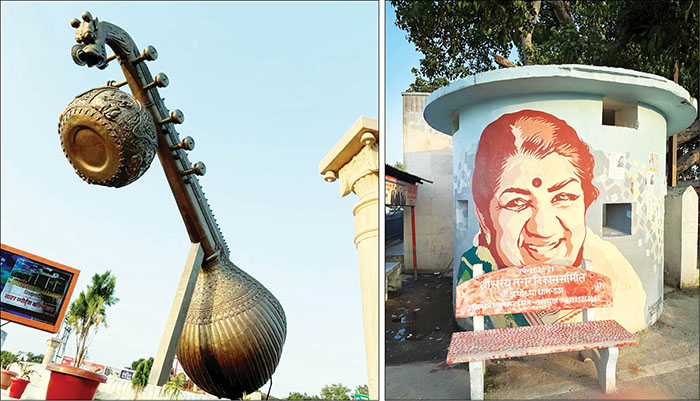
Visit to temple at 1.30 am !
We had planned to do the Sparsh Linga Darshan — touching of the idol (a phallic shaped stone sculpture known as Shiva Linga) at Sri Vishwanatha Temple (the main deity of the city). So we were up at 12.30, bathed and ready by 1.30 to stand in the long queue!! And to our chagrin, there were many people before us !! Anyway, by 3.30, the line began to move and soon we were in the temple.
We offered a mixture of milk and water along with flowers to the idol and felt blessed that we were able to touch the idol. People almost falling over in the process of trying to touch the Shiva Linga!! I wondered if God will give me more blessings if I touched the idol as I did so.
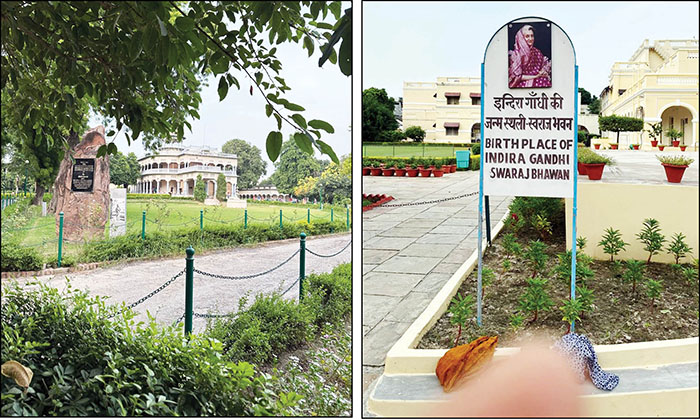
There are many small temples within the same premises, but what catches your eye is the Mosque within the precincts. It is beyond me to imagine how anyone can claim that the Mosque was the older structure, when there is a Nandi sitting quietly and patiently facing the Shiva Linga, which some claim is a fountain? While the Court decision is awaited, the interim decree allows puja once a day to the Shiva Linga idol.
All of us prayed that soon we will be able to offer prayers at the “real” temple. The temple itself has faced various onslaughts from Muslim invaders who looted the temples for their wealth, but every time faith has triumphed and rulers like Ahilyabai Holkar and others have restored the temples over and over again.
Kashi is a temple town, so there are many other temples to visit — Annapurna Temple, Vishalakshi Temple and yes the Kaal Bhairav Temple. It is said that Kaal Bhairav is the kotwal, the keeper, watchman, of Kashi. Anyone who visits Kashi must first visit Bhairav — and if you are pure of heart and intention, he will let you enter!! In fact Kashi is also the place of the Ashta (eight) Bhairavas. Asitāṅga Bhairava, Ruru Bhairava, Chaṇḍa Bhairava, Krodha Bhairava, Unmatta Bhairava, Kapala Bhairava, Bhīṣaṇa Bhairava and Saṃhāra Bhairava… each of them controlling one cardinal direction. And offering specific blessings. Then we went to Durga Devi Temple and the Sankat Mochan Hanuman Temple (believed to be constructed by Saint Tulsidas).
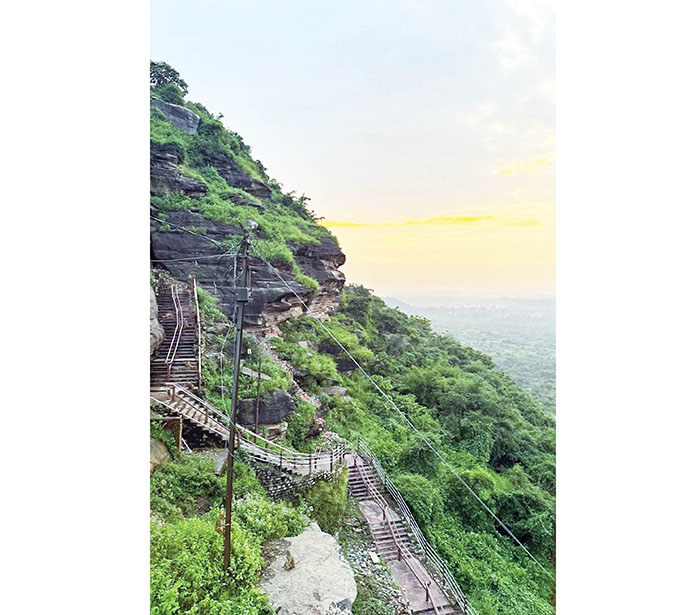
The Shiva Puranas mention 21,000 temples in Kashi, but now there are certainly many more. Sadly, it has become a commercial venture. Small corner — put up an idol, light two lamps and offer some flowers — lo and behold you have your own temple, where people make offerings of small change!! We rested like logs on returning to the hotel for late breakfast.
Post lunch we decided to visit Sarnath, a short 10 kms from Varanasi. It is where Buddha preached his first Sermon to his 5 primary disciples, who later on carried it on to other parts of India and the world. There stands a Buddha statue of 80 feet tall, surrounded by 12 of his Bhikshus. A huge Stupa is built, it is said, at the spot where Buddha gave his first sermon. (See pic.)
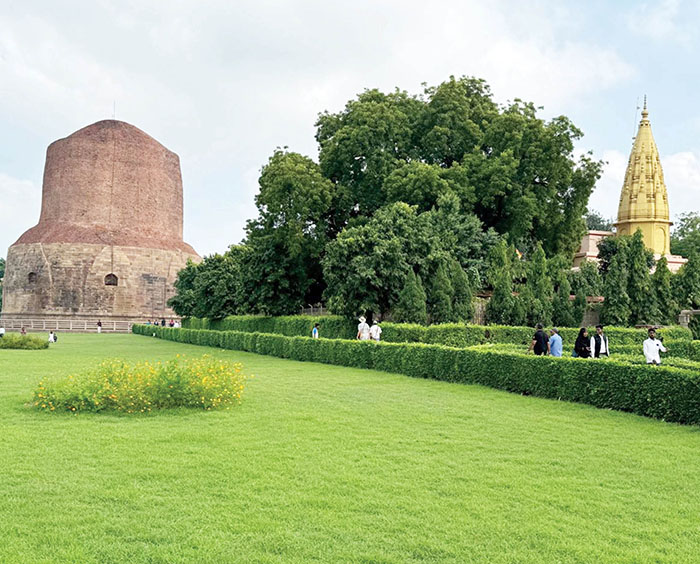
Ganga Aarti at 7 pm
Later in the evening, we wanted to see the Ganga Aarti. While the original plan was to watch the Aarti, which is held on the Ghats, from a boat in the river, due to the floods, we were not able to. So we decided to go and watch the aarti from the Ghats itself. Kashi has many Ghats with different names on the banks of river Ganga generally known as ‘burning ghats’ because of burning of dead bodies. The more well-known amongst them for Ganga Aarti is the Dashashwamedh Ghat. It is said, Brahma, the creator, performed the Ashwamedha Yajna 10 times here!! We had to be seated about an hour in advance but could not suffer it, hence paid the price by standing for nearly 2 hours!! The Aarti is itself mesmerising and includes raising high up in the air of incense sticks, smoke pots and lighted conical shaped lamps in a rhythmic manner to loud devotional music.
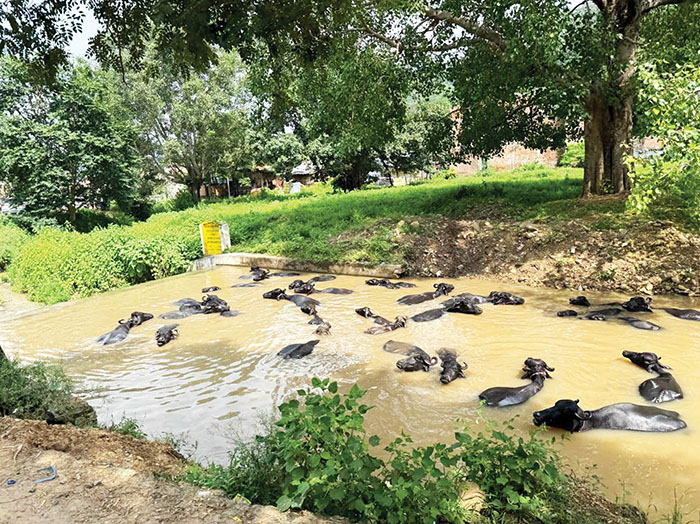
Chaats of Kashi
And then, how could we leave Kashi, without tasting the Chaats? Tamatar Chaat, Aloo Chaat, Papdi Chaat, … Chaat …. Chaat. Then, of course, we had to have the Banarasi Lassi (beaten buttermilk) which in other places is a drink, but here it is eaten with a spoon (made of thick curd, with dried fruits, saffron, honey etc.). And to round it all off, we had the famous Banarasi Paan, with one of the team members celebrating their birthday by treating us to all these delicacies!
Day 7 and 8. Bodh Gaya and Gaya: The journey from Kashi to Bodh Gaya is a straight 6.5 hours. Bodh Gaya is where one of the holiest temples for Buddhists is. Buddha was enlightened here, sitting under the Bodhi tree (Peepul tree). A large temple complex houses the temple which is a huge spire nearly 150 feet high. The idol is of Buddha seated in the Bhumi Sparsha Mudra, made by Ashoka, and later covered in gold by the Gupta Kings. Buddha serenely looks at us with his downcast eyes as we make our way to the altar and then exit from the side where the tree is. There is a small platform, where you can sit and meditate (but no enlightenment is guaranteed).
Come outside and you are besieged by hawkers trying to sell you Peepal leaves with a small painting of Buddha. Souvenirs brought, we took the proverbial route — a short walk, then an auto to take us to the parking lot to board the bus.’
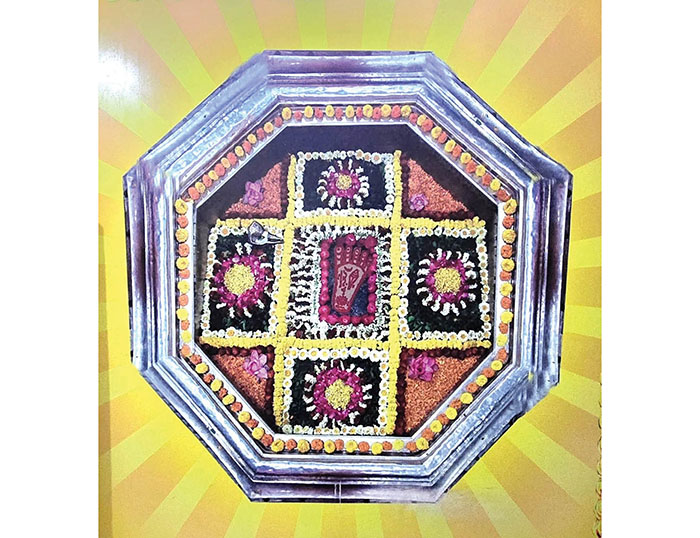
Vishnu Pada
Gaya is also famous as a place where rituals are done for the departed souls by the Hindus. As Hindus believe that there is a cycle of rebirth, it is customary to offer rituals to ensure that the departed souls are liberated. So we went to Vishnu Pada.
Rituals here differ according to the region of the devotee (and, of course, by caste and sub-caste and sect etc.). So many States have their own Centres where they do these rituals, like Bengali Bhavan, Tamil Bhavan etc. We went to Karnataka Bhavana (the arrangements were made by one of our group members Vasudev Bhat) and the various rituals were done.
Personally speaking, as I had never had a chance to understand these rituals, I was able to see, hear and understand what it all really means. And I found it fascinating and enlightening. The karta (person doing the ritual) makes 108 balls of rice mixed with til (Black Sesame seeds), and places in three sets of 36 balls each. There is a ball of rice for each parent, grandparent, uncles, aunts, relations by marriage, cousins and even friends… Think of each of them and place the balls in three sets. A simple, elegant and effective way of remembering all our relatives, near and not-so-near ones!!
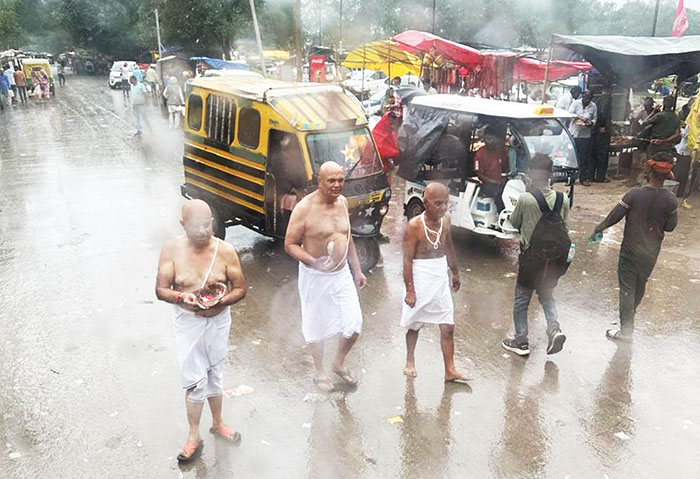
Then you take these 3 sets of balls of rice to offer them — one set to the river Phalgu. And another set to the Vishnu Pada Temple and then, another set to the Akshayavat (The huge Banyan tree). A wonderful way of saying that all human beings have a debt – to water (represented by the river), to society (represented by the temple) and to nature (represented by the tree). While we offer these rituals, we forget that these are symbolic not an act by itself. Here we are, polluting our rivers, damaging our society and destroying nature and yet offering rice balls as Shraddha pinda dan!! Our ancestors have given us lessons but we have taken the words and missed the messages!! Sad but true.
Legend is that there was a demon named Gayasura. He prayed to Brahma and received a boon that whoever looks at him, will attain Moksha. But Vishnu could not allow that to happen. After all, Moksha should be achieved through ones deed and fair actions. So, he came to Gayasura and pushed him into the netherworld. Gayasura realised his mistake but pleaded with Vishnu that he was hungry and needed to come up to feed. Vishnu blesses him that whenever anyone offers food in Gaya, it will nourish him and he will never go hungry.
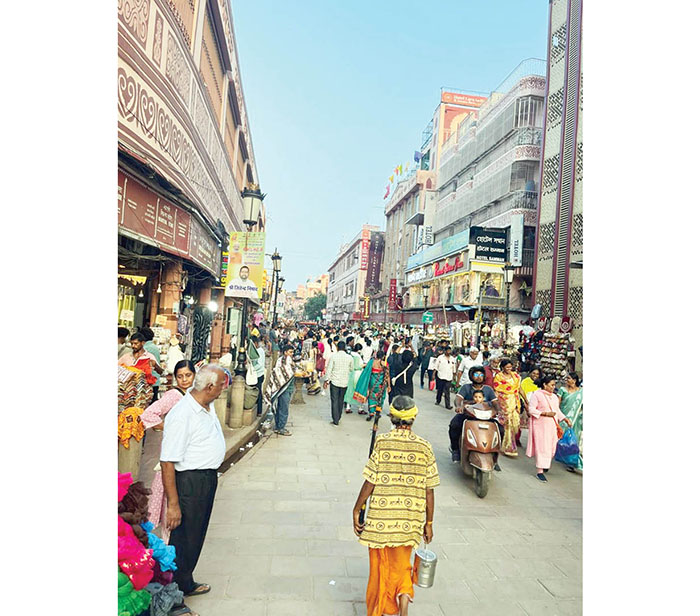
The day when no one would offer him food, he is at liberty to come out and eat whoever and whatever he chooses. Fortunately, that day has still not come!! Mix of myth and faith.
This being the last leg of our journey, it was back to the hotel, pack bags and leave for the airport. Soon we were saying our goodbyes to the recently acquired family of friends. A wonderful 8 days spent in great company, with greater camaraderie, to create even better memories!!



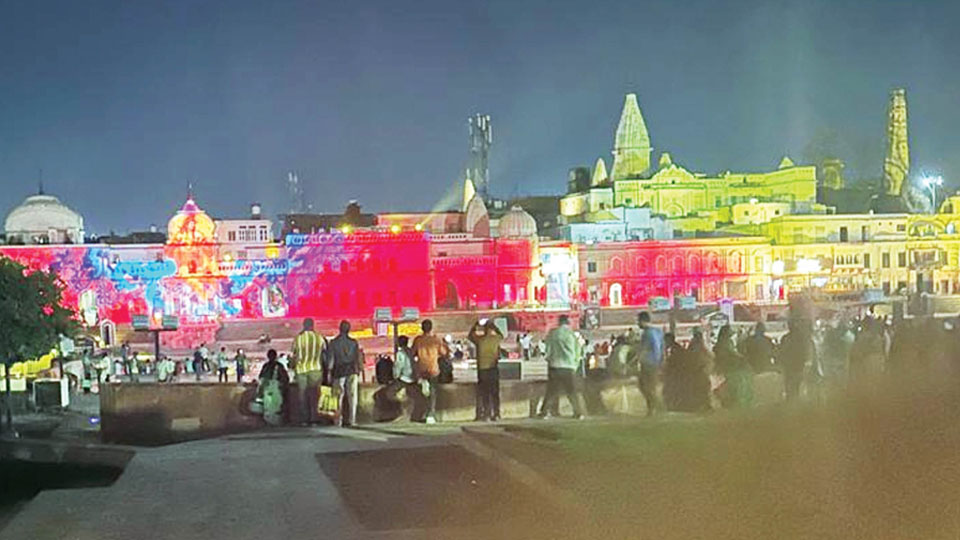
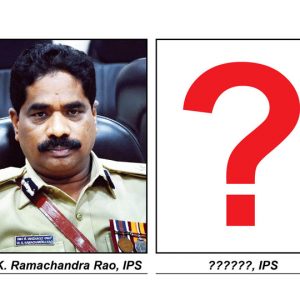
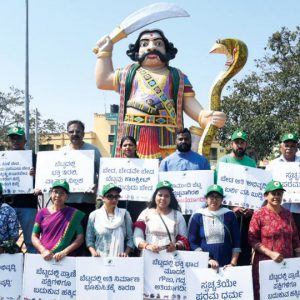
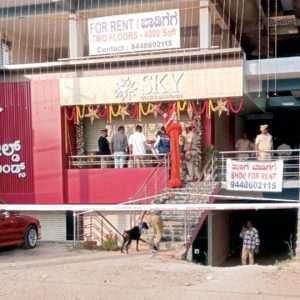
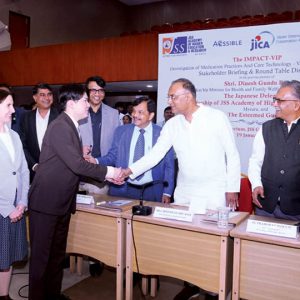
Recent Comments